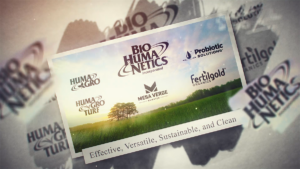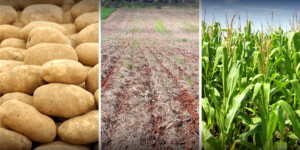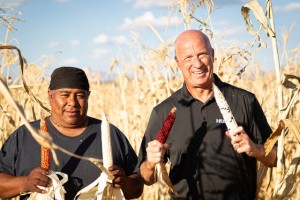At the BHN 2016 World Conference in October we had a chance to sit down with a few of our key distributors and ask them about their experiences with Huma Gro® products. Here are the resulting testimonial videos from distributors in Turkey, Costa Rica, Philippines, and the United States.
Adolfo Meneses—representing Agroinnova S.A. in Costa Rica—talks about his experience conducting Huma Gro® product trials for his company since 2010. Agroinnova now has 22 Huma Gro® products registered in Costa Rica and anticipates registering at least 10 more. “When you use the whole package of Huma Gro® products, the plants are more uniform. Huma Gro® products are high-quality: We’re very happy to be a Huma Gro® distributor.”
Products mentioned: VITOL®, BREAKOUT®, Calcium, PHOS-MAX™, SUPER POTASSIUM™, SILI-MAX®
Crops: Rice, Melons, Tomatoes, Pineapple
Adolfo Meneses 2016 BHN World Conference from BHN_Vimeo on Vimeo.
# # #
Dr. Bülent Özekici—representing SPN Agro in Adana, Turkey—has been using products on a citrus plantation since 2010. He began by doing product tests for 3 years, but is now using full Huma Gro® programs on his trees. “Customers tell me my fruit quality has improved since I started using Huma Gro® products, and that shows me they are working. I’m also saving 18% on my total fertilizer bill, no longer have to worry about my irrigation systems clogging, and don’t need as much product storage space as I needed for conventional fertilizers. With higher yields and better quality, what else can you ask for?”
Products mentioned: SUPER PHOS®, SUPER POTASSIUM™, Boron, GHOST™, Z-MAX®, VITOL®, BREAKOUT®, MICRO CARBON TECHNOLOGY®
Crops: Grapefruit, Lemons, Tangerines, Mandarins, Oranges, Pomegranates
Bulent Ozekici 2016 BHN World Conference from BHN_Vimeo on Vimeo.
# # #
Roy Candelaria—representing Oracle Chemical Corporation in the Philippines—talks about his company being a pioneer in the organic movement and the important role played by Huma Gro® PROMAX® and PROUD 3®, particularly in the management of nematodes and clubroot (Plasmodiophora brassicae). “We have found no other existing products that can match Huma Gro®; the products are really effective plus they have zero re-entry.”
Products mentioned: PROMAX®, PROUD 3®, ZAP®
Crops: Pineapples, Potatoes
Roy Candelaria 2016 BHN World Conference from BHN_Vimeo on Vimeo.
# # #
Trent Graybill—representing Soilcraft in the USA state of Washington—discusses his experience using Huma Gro® products on tree fruits. “Tissue analysis shows that with Huma Gro® products we have the most elevated nutrient levels we’ve ever seen. We’re also seeing increased fruit set, better color, and higher quality. Huma Gro® products are far ahead of conventional plant nutrition products in terms of being more efficient with less negative impact on the environment.”
Products mentioned: PROMAX®, C-PHOS™, MAX PAK®, Manganese, VITOL®, SOIL-MAX™, FERTIL HUMUS®, BREAKOUT®, Cobalt
Crops: Apples, Cherries, Pears, Row Crops
Trent Graybill 2016 BHN World Conference from BHN_Vimeo on Vimeo.
# # #
Additional Huma Gro® videos are available at https://humagro.com/huma-gro-videos/.
Related Posts

Video: Earth Day, 2021
Over 50 years ago, on April 22, 1970, 20 million Americans took to the streets to protest environmental destruction and to celebrate the wonders of Planet Earth. The basic message was that we had to find new ways to live our lives, raise our food, and conduct our businesses that were environmentally friendly and sustainable—that

This Week in Ag #3
There are lots of definitions floating around for regenerative agriculture. But the best and simplest I’ve heard was from Soilcraft. They define regen ag as adding “life.” When you think about it, the practices of no-till/low-till, crop rotation, cover crops, manure and biological products all help create, stimulate, prolong and accelerate more diverse life in the

This Week in Ag #41
This is American agriculture’s big week – Thanksgiving! Our celebration of food takes center stage on family dining tables from sea to shining sea. Not only do we honor the 1% who currently feed us, we also reflect upon the many contributions of the original American agriculturalists, our Native Americans. For starters, they saved the Pilgrims from starvation during their first years in the New World. The Wamponoag tribe utilized their famous “Three Sisters” cropping practice: corn, beans and squash.

